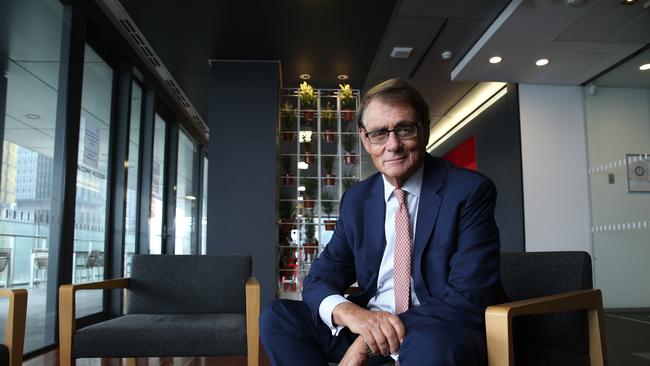Westpac’s Bill Evans predicts more RBA rate cuts amid flagging consumer confidence
Westpac’s Bill Evans now thinks the central bank will cut interest rates to 0.5pc by February.

One of Australia’s most respected economists says the Reserve Bank will now cut interest rates to a new record low 0.5 per cent by February after consumer confidence was dented following back-to-back reductions in the official cash rate over the last two months.
Westpac chief economist Bill Evans on Wednesday revised his earlier forecasts, which previously had the central bank reducing interest rates to 0.75 per cent, to a new low of 0.5 per cent after he was “surprised” to see consumer confidence dive after the latest round of easing by the RBA.
The RBA cut its official cash rate last month and this month, the first successive reductions since 2012. The official cash rate stands at a record low of 1 per cent.
“We expect that the RBA will eventually see only one more rate cut, in October, as being an insufficient response,” Mr Evans said, noting that the resistance of the major banks to passing on the next rate cut could encourage the central bank to make further reductions to interest rates.
Australia’s jobless rate remained stuck at 5.2 per cent last month, according to data from the Australian Bureau of Statistics that revealed a fall in job numbers in the key states of Queensland, NSW and Victoria.
Minutes from this month’s RBA’s board meeting, released this week, showed the central bank had left open the prospect of further interest rate cuts in coming months if conditions in the job market do not improve.
The RBA has cut interest rates to push the unemployment rate lower over time, as its senior economists now estimate that an unemployment rate of 4.5 per cent represents full employment. The unemployment rate hit a decade low of 4.9 per cent in February.
Westpac’s own forecast is for the unemployment rate by end 2019 is 5.4 per cent, Mr Evans said.
“The response by the banks to the move in the cash rate to 0.75 per cent will be an indicator to the RBA of the likely effectiveness of any further cuts,” Mr Evans said.
A new UBS analysis this week found Australia’s biggest banks have “rarely been more profitable” and the sector’s habit of squeezing customers to deliver outsized returns for shareholders could “inhibit” the Reserve Bank’s attempt to revive the economy with rate cuts.
While the RBA cut interest rates twice over June and July, slicing 50 basis points off the cash rate, Commonwealth Bank and NAB reduced their standard variable mortgage rates by only 0.44 percentage points, ANZ dropped its rate by 0.43 percentage points while Westpac held back the most, lowering its rate by just 0.4 percentage points.
Due to years of holding back partial amounts of RBA rate reductions to support their own profits, the difference between the cash rate and the standard variable mortgage interest rate offered by the banks has risen to a 25-year high of 3.94 percentage points.



To join the conversation, please log in. Don't have an account? Register
Join the conversation, you are commenting as Logout